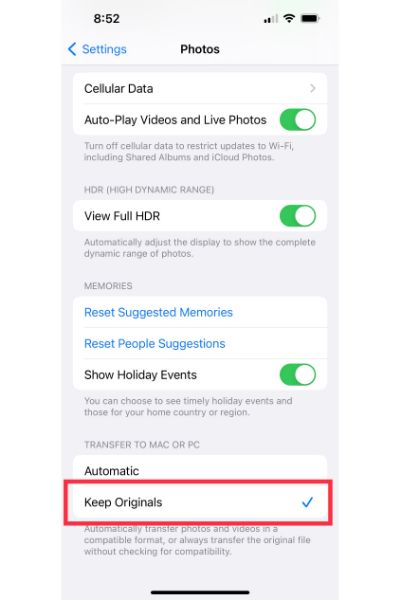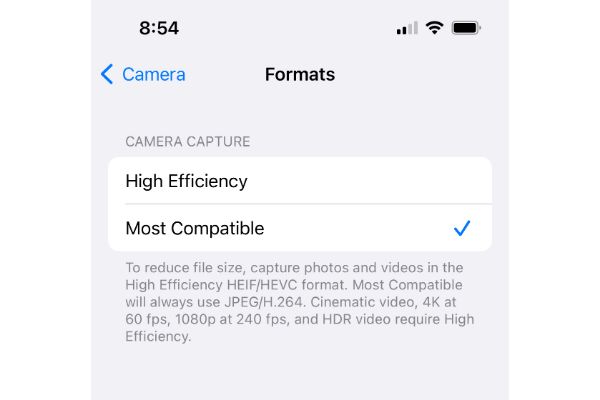Disclaimer: This post may contain affiliate links, meaning we get a small commission if you make a purchase through our links, at no cost to you. For more information, please visit our Disclaimer Page.
Apple is known for creating proprietary devices that use their own services to send communications between each other. Although any services under the iTunes umbrella might be known even outside the community of Apple users, AirDrop is yet another one that can allow different Macintosh devices to talk to each other.
As the name implies, AirDrop does this by using close-range wireless technology. In doing so, users who have access to AirDrop can send files in different formats between compatible Mac devices. To do this, Apple uses IPv6 addresses that it generates via a direct linking instead of the usual Wi-Fi chip and MAC address inside the device itself.
Some users might wonder why AirDrop displays a ‘converting’ message when they are trying to send files from one device to another. We will go into that in our article, but we will also touch on whether the quality of the files remains the same once other devices receive and display them.
Further, we can discuss whether it might be possible to force AirDrop to send the files in a format that is the same as the one a user has saved it in, and we can explore if it is possible to do it this way even with large files. Because you can send some large files, we’ll also discuss any possible limits placed on file numbers or sizes that you can use with AirDrop.
Table of Contents
What Does It Mean When AirDrop Says Converting?
AirDrop allows Apple users to send files from their iPhones to Mac computers, and they can also perform this process in reverse. The technology is something that Apple introduced in both macOS 10.7 and iOS 7, and it has been a staple of file transferring between the company’s official devices ever since. In most cases, users are able to send or receive videos through AirDrop immediately, making it a quick service to use.
However, sometimes the process can take a bit longer, and this is usually related to the fact that AirDrop might need to convert files you have saved before it processes and sends them to the device of your choice.
With iPhones, videos you take are saved in a specific format as a way to save some of the limited space to which you might have access. HEVC is the usual format you should see, and it is not always compatible with other devices that might want to play the videos you send. This is a high-efficiency format that reduces the overall size of the videos you capture on your iPhone.
When AirDrop needs to send the files to other devices, it will usually choose to convert them to a format that is more compatible as a way to ensure that the videos are playable on the receiving device.
In most cases, this process should be automatic, and users should see a ‘Converting’ bar or similar message once they’ve chosen to send the video out. This is why you’ll be met with a message like this when you try to send videos, although it should not be an issue if you’re just recording videos to keep on your phone.
Do You Lose Quality When You AirDrop Photos or Videos?
Generally, you should not see a loss of quality when you AirDrop any photos or videos. For the purposes of our discussion, we’ll use the AirDrop branding as a verb that assumes you are sending videos or images to another compatible device.
When you AirDrop something, it should not compress anything, and the receiver of your file should be able to see it in whatever resolution or quality it was in when you took it.
However, as with many things in the tech world, there are a couple of things to keep in mind. There are possible settings or situations in which you might notice a dip in quality when you AirDrop some videos or photos.
This loss in resolution or clarity might happen because of how AirDrop is set up on your phone. When you go to the ‘Settings’ section of your phone, you should see a subsection for ‘Photos’. Going into this area, you can scroll down to see options for transferring items to Mac or PC.
This should all be the same information if you use the iPhone’s own iOS or the iPadOS for tablets. Once you get here, you might notice that ‘Automatic’ is selected.
With this setting active, AirDrop may choose to export the media in a lower resolution once it gets to the PC or Mac of your choice, but it can depend on how the receiving device is set up. You can change this option to ‘Keep Originals’ as a way to force AirDrop to maintain the higher resolutions you prefer.
Even with ‘Automatic’ selected, it should be simple for AirDrop to send images and video to compatible devices without converting anything or messing with the quality. However, this might not be an option if the receiving device is running an Apple operating system that is a few versions behind your phone or tablet.
If the device to which you’d like to send some media is a few years old, or if it is running a version of the operating system that is too far behind, AirDrop may deem it necessary to downgrade the quality to save space or resources on the receiving end. Switching to ‘Keep Originals’ should help to ease this issue, too.
How Do I Stop AirDrop From Converting?
Although converting is convenient and useful for making sure that all the files you might send to others via AirDrop are viewable, it is possible that you want to make sure the program does not waste time doing this.
If so, it is best to make sure that the devices that are supposed to be receiving the images or videos can do so in a compatible format. Problems may occur on the receiving end if the formats are not ones that they support natively. However, it is still possible to ask AirDrop to skip the conversion process altogether.
To do this, you can start by:
- Visiting the ‘Settings’ section on your iPhone or iPad.
- From here, navigate to ‘Camera’.
- Go to the ‘Format’ subheading from within the ‘Camera’ menu.
- You should see an option for ‘Most Compatible’. Select this option to change the format over to it.
From now on, the camera should record video in the H.264 format. This format is much more compatible and flexible with many of the devices you might send files to, making it easier for AirDrop to skip the conversion process. The only potential downside here is that such a format should take up more space for each file.
Can AirDrop Send Large Files?
Yes, as long as the intended recipient is nearby, you should have no problems sending large files to them via AirDrop. Just make sure that your recipient has AirDrop capabilities enabled on their device. That way, they can accept the transfer request once you decide to send a larger file.
Many other methods of sharing files can limit the total size to only a few megabytes, but AirDrop does not do this. The flexibility of the communications technology is one reason why it is a good choice for sending high-quality video files to other users.
Although the program has no obvious size limitations, larger files may take longer to load up. It is also possible to get stuck when sending them.
How Long Does It Take to AirDrop a Large File?
How long it takes to send large files via AirDrop can vary depending on the actual size of the videos or images. The stability and strength of the connected signals could also play some role here.
In any case, you should still be able to send large files to others within a matter of a couple of minutes. If you are having troubles with files getting stuck longer than this during a transfer, check for any error messages you might see. It may be a good idea to try resending the file from the beginning, too.
Is There a Limit to How Much You Can AirDrop?
No, there are no limits on how much data you can AirDrop to another device. The only true limitation is in how long you want to wait for all of your transfers to complete. On a related note, sending data between two devices that are running different versions of an operating system might make this process take longer.
Conclusion
For relatively quick transfers of files between two nearby users, it is hard to beat the convenience of AirDrop. In most cases, you can transfer files at the highest quality possible, but you can also opt for more compatible formats that may bring down this level in favor of making sure the data is viewable on another device. Fortunately, there is no limit to how much data you can send at once, making several large transfers a trivial matter.


